
Discover the average hot tub maintenance cost, what impacts pricing, and how to save money. Get expert tips to keep your hot tub running smoothly all year.
Find out what’s behind your heated, bubbly water


Pumps circulate the water throughout your hot tub.
Your hot tub water goes through a filter, heater, and sometimes, an ozonator.
The blower creates bubbles while the lights add ambiance to your soaks.
For people who love baths, a hot tub is a whole new level of fun and relaxation. But have you ever wondered how a hot tub works? Whether you’re considering buying a spa or already have one in your yard, understanding the basics of how hot tubs function will help you choose or maintain a tub.
A hot tub, also called a spa or Jacuzzi®, is a jetted tub with heated water. Spas are often paired with pools, although a standalone hot tub can be great, too. You can install them in-ground or aboveground and with or without a gazebo.
Many people enjoy using their hot tubs for fun and relaxation. It’s a way to level up your backyard while adding something for your friends and family to enjoy.
There are three main types of hot tubs: inflatable, plug-and-play, and traditional. The inflatable hot tubs are temporary and easy to set up. If you’re looking for something more permanent without complex installation, then check out plug-and-play spas. And if you’re looking forward to throwing epic pool parties and want a big hot tub, the traditional ones are your best bet.
Hot tubs cost $6,000 on average, with aboveground tubs ranging between $400 and $18,000. In-ground hot tubs cost more, and you can expect them to fall between $5,000 and $25,000.
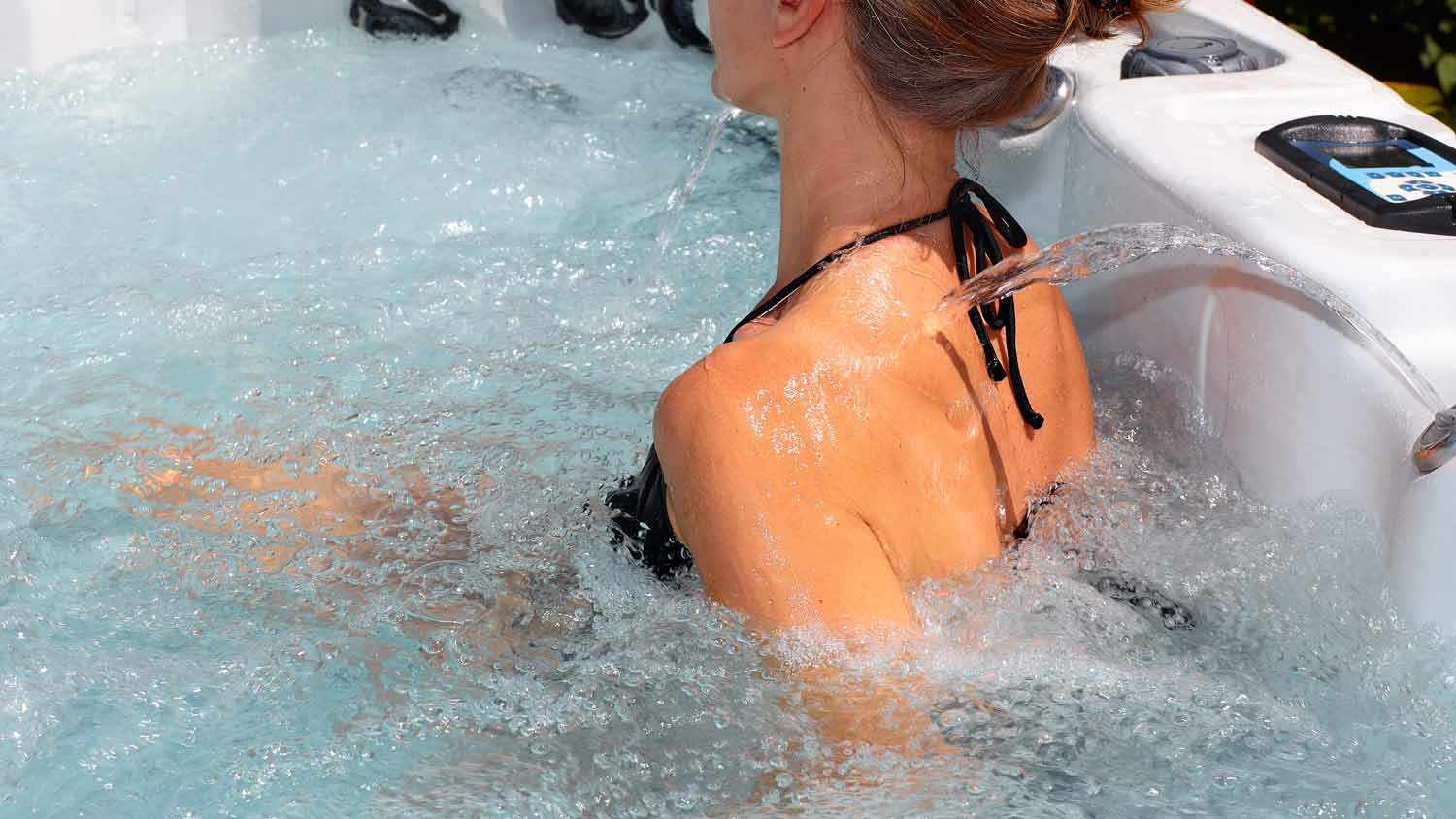
After a long day, there’s nothing better than soaking in the spa. But how does a hot tub work, anyway? Your tub has pumps that circulate and push the water through the filter. The filter traps debris and contaminants, helping keep the water clean.
After that, the water travels to the heater, where it’s warmed up. If your tub has an ozonator, then it sanitizes the water. And finally, the pump pushes the water through the jets and back into the tub.
Once you fill up your spa for the first time with a garden hose, you need to balance and treat the water to enjoy it until you need to drain the hot tub and refill it again. In the meantime, keep your hot tub on so the water continuously circulates. The constantly moving water prevents the growth of bacteria that takes place in stagnant water.
If you’re buying your first hot tub, your local hot tub installer can answer questions and walk you through the installation process.
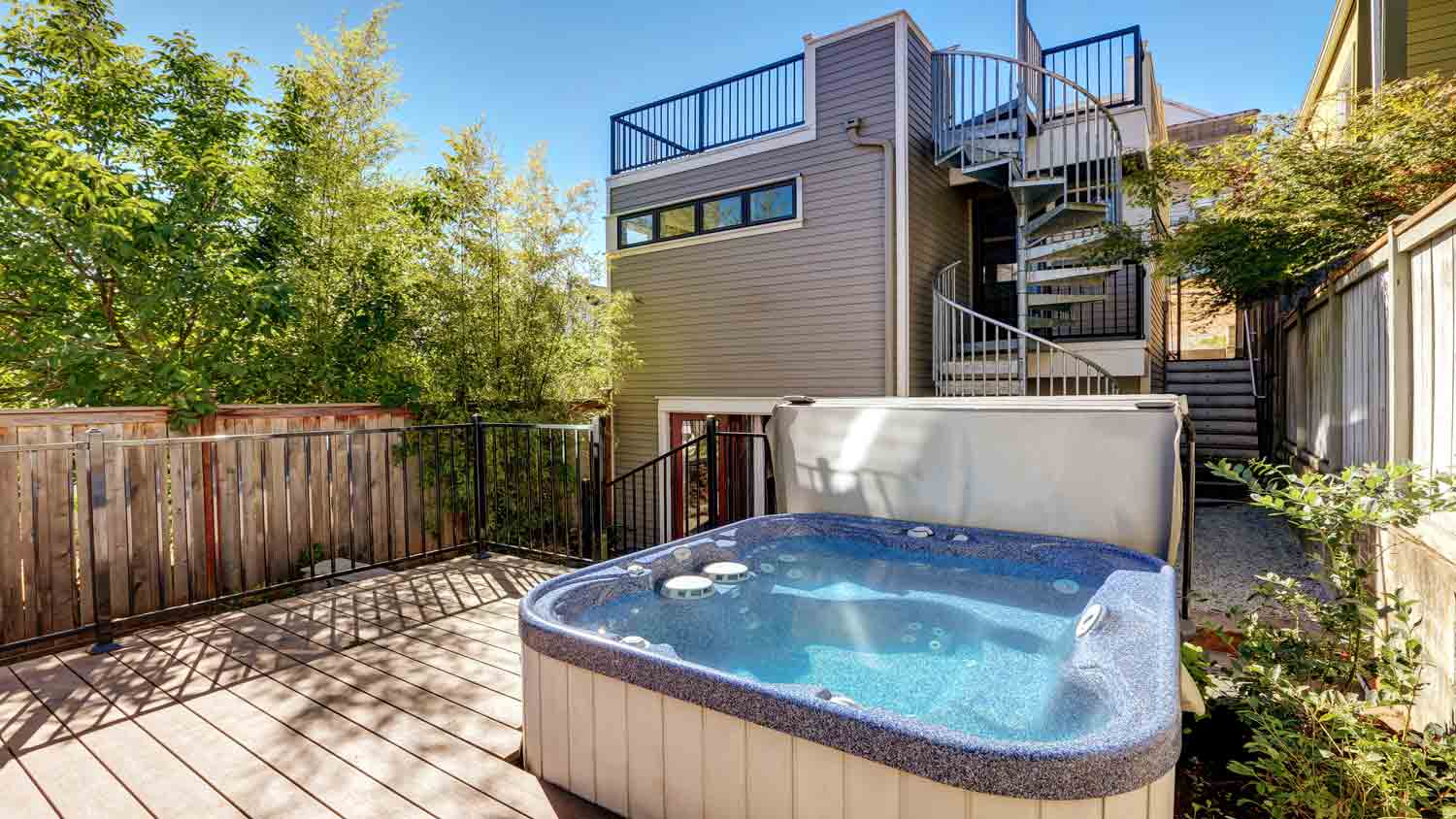
Now that you know how a hot tub works, let’s dive into detailed information on the different parts of a hot tub that make this exciting feature possible.
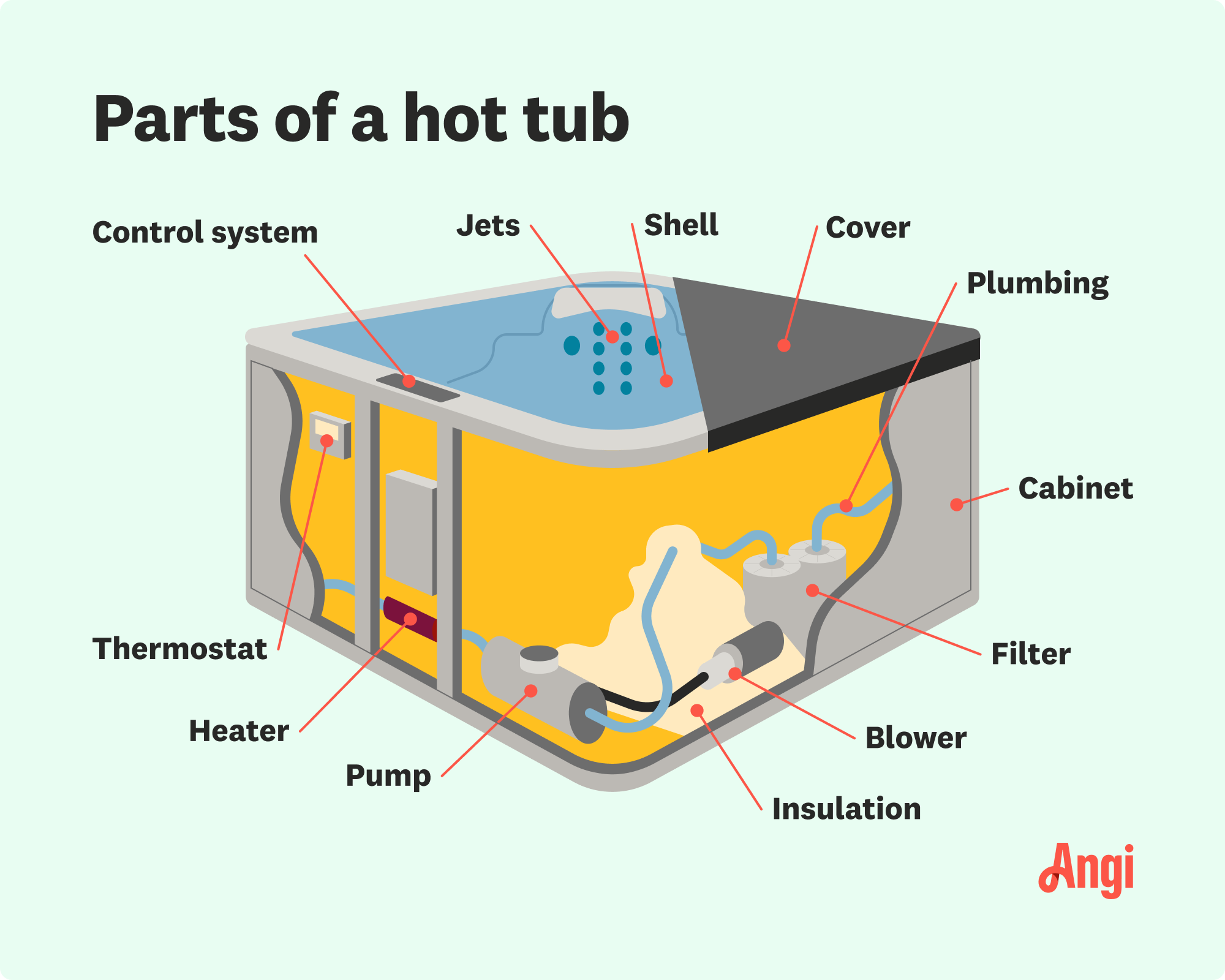
The shell is the main part of your tub. Manufacturers commonly make shells with acrylic, rotomolded plastic, and vinyl. Acrylic shells are long-lasting, while rotomolded plastic shells are light and durable. Vinyl shells are the most affordable, although they’re the most susceptible to damage.
Most shells are square or circular, but many other shapes are available, like triangles and octagons. The shell also has built-in seating, and depending on the model, you might have a mix of different seats like bench seats, lounger seats, and captain’s chairs.
Your spa shell sits on your cabinet, or the base of your spa. Manufacturers often make cabinets with wood or engineered wood. Other popular materials include engineered stone and faux brick. Look for a cabinet that complements the rest of your yard since it’s the first thing people will notice when looking at your spa.
The insulation between your shell and cabinet helps your spa retain heat. Full foam insulation is the most effective and fills in all the gaps between the shell and cabinet—but it’s more expensive. On the other hand, partial foam insulation covers the shell but leaves a gap between the shell and cabinet.
Your hot tub pumps do all the heavy lifting by circulating the water through the filters, heater, and jets. It’s most common to have two pumps—one to circulate the water and another to power the jets—but depending on the hot tub size and model, you may have one to three.
The most common types of filters are cartridge and ceramic, although there are other options out there like diatomaceous earth (D.E.) and sand filters. Cartridge filters trap debris, while ceramic filters also filter bacteria and viruses.
Different hot tub models have different filter and pump layouts, so your spa may filter 100% or only 50% of the water before pumping it back into the tub.
Either way, staying on top of your filter maintenance will help keep the hot tub water clean and sanitary. A clogged filter can prevent your water from heating up properly and lead to unbalanced water that’s not safe to soak in.
Without the heat, your hot tub is basically a tiny pool, so it’s one of the most valuable components. Most people have electric heaters, but you can also opt for a heat pump instead. Electric heaters are more affordable than heat pumps and are faster at warming the water. On the other hand, a heat pump can save you money on your electric bills.
An ozonator destroys bacteria, viruses, and other organic compounds your filter can’t handle. It adds ozone to your water, which breaks down contaminants. Not all tubs have an ozonator, but if you have one, you won’t have to rely only on chlorine or bromine to sanitize your water.
The jets provide the amazing burst of pressurized water in your spa. You can adjust the pressure and flow of your jets for maximum relaxation. Depending on your tub, you might even have different massage options you can choose from. Aboveground hot tubs have 30 to 100 jets, whereas in-ground tubs have five to 20 jets.
One of the best parts about getting into a hot tub is the amazing bubbles, but did you know they’re not from the jets? Hot tubs have blowers, which are air pumps with a fan that create the bubbles. Although the bubbles only add a visual aesthetic, most people prefer to have their blowers on to complete the hot tub vibe.
Your hot tub lights bring your tub to life at night. Most of the time, you’ll have color-changing LED lights so you can set them to your favorite color or to fade between different colors. Depending on your spa, you might have a couple of lights by your feet or many lights throughout your tub.
Your spa control system distributes power to all the important parts of your hot tub, including the pumps, heater, blowers, and lights. Modern tubs have digital control systems, whereas older tubs have air control systems. Digital systems are arguably better since they’ll let you know if there’s something wrong with your hot tub, like the check engine light on your car.
The spa topside controls are like the remote for your tub. You can control your pumps, heater, lights, and blower by simply pressing buttons.
The equipment access door gives your hot tub repair pro an easy way to access and repair your pipes and parts. You can take off the access door by removing the screws or using the sliding clips.
Hot tub covers keep the heat trapped inside your spa when it’s not in use. This helps keep your electric bill down and prevents water from evaporating. Plus, the cover helps protect your water from debris like falling leaves and prevents children or pets from falling in accidentally.
As you can see, there are many moving parts in a hot tub. If you want to make sure everything keeps moving smoothly, you’ll need to stay on top of your maintenance tasks. If you don’t have the time to take care of it all, hire a pool and spa company to do it for you.
Here are some hot tub maintenance tips to keep in mind:
Test and balance your water two to three times a week
Inspect and clean your filters once to twice a month
Drain your water every six weeks to four months
Winterize your tub
Hot tub maintenance costs $240 to $900 annually, so keep that in mind when budgeting for your home expenses.
From average costs to expert advice, get all the answers you need to get your job done.

Discover the average hot tub maintenance cost, what impacts pricing, and how to save money. Get expert tips to keep your hot tub running smoothly all year.

We could all use some relaxation, but we don’t always have the budget. This guide will show you how much an in-ground hot tub costs—no matter the build.

Swim spa costs vary, but each unit offers the benefits of a pool and hot tub combined. Use this guide to plan your budget.
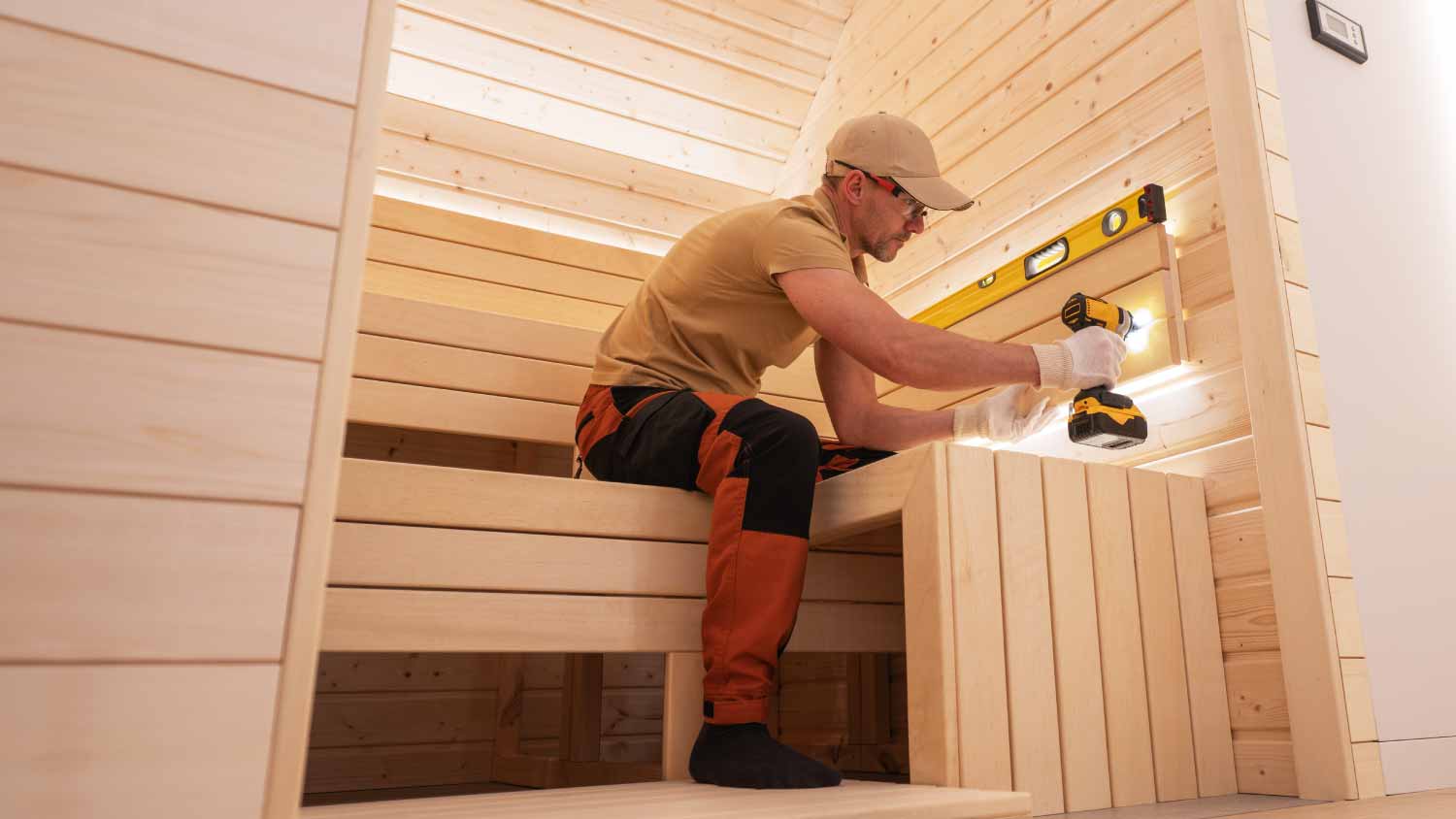
Find out what impacts sauna repair cost, get estimates, and learn how to save on repairs. Empower your budget with expert tips for every sauna repair scenario.
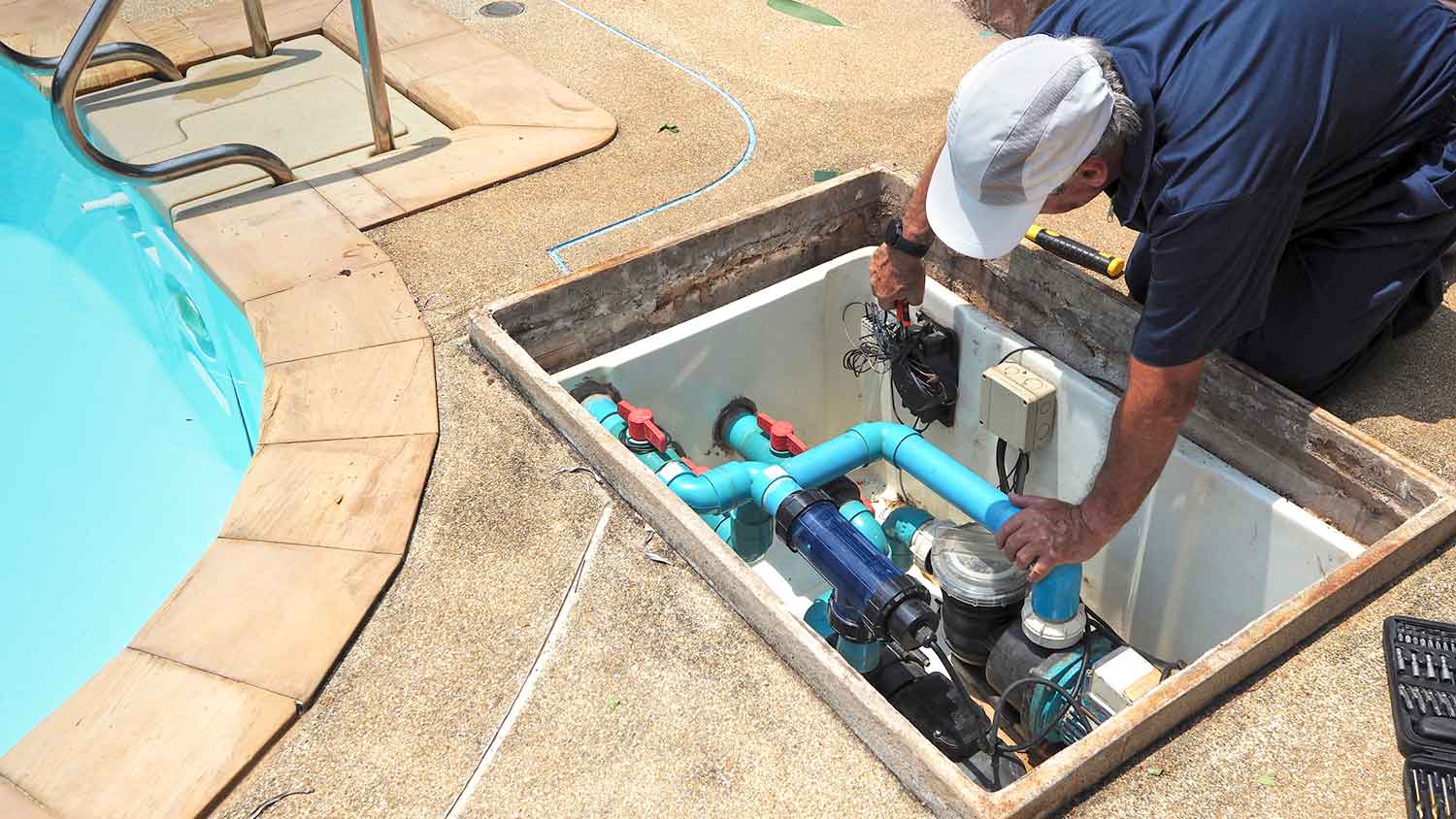
Find out the average pool pump repair cost, key price factors, and ways to save. Get expert tips to budget for your pool pump repair.
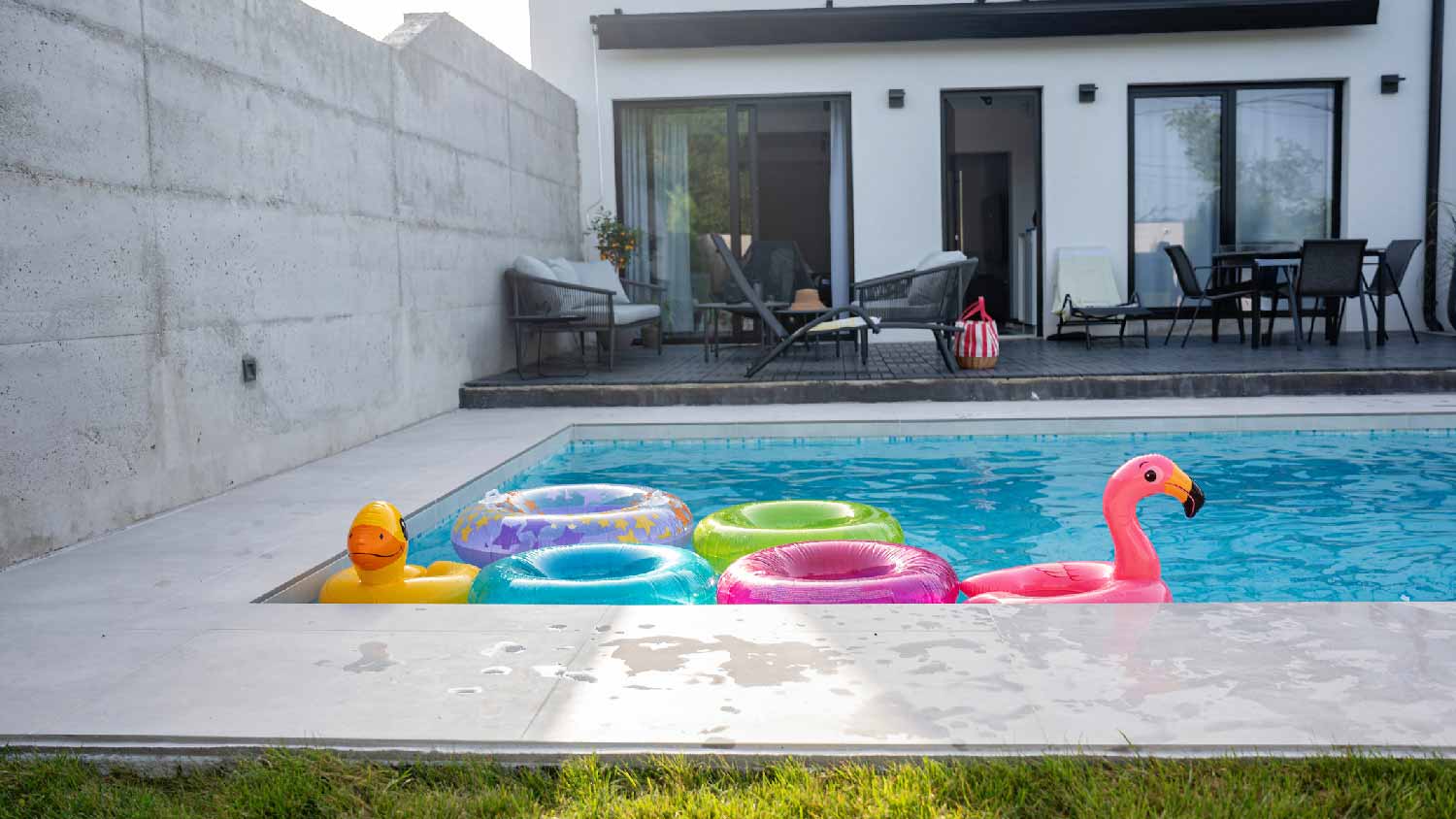
Why is there sand in my pool? Often, it’s due to a broken sand filter, but there are other common causes as well. Here’s how to identify and fix the problem.